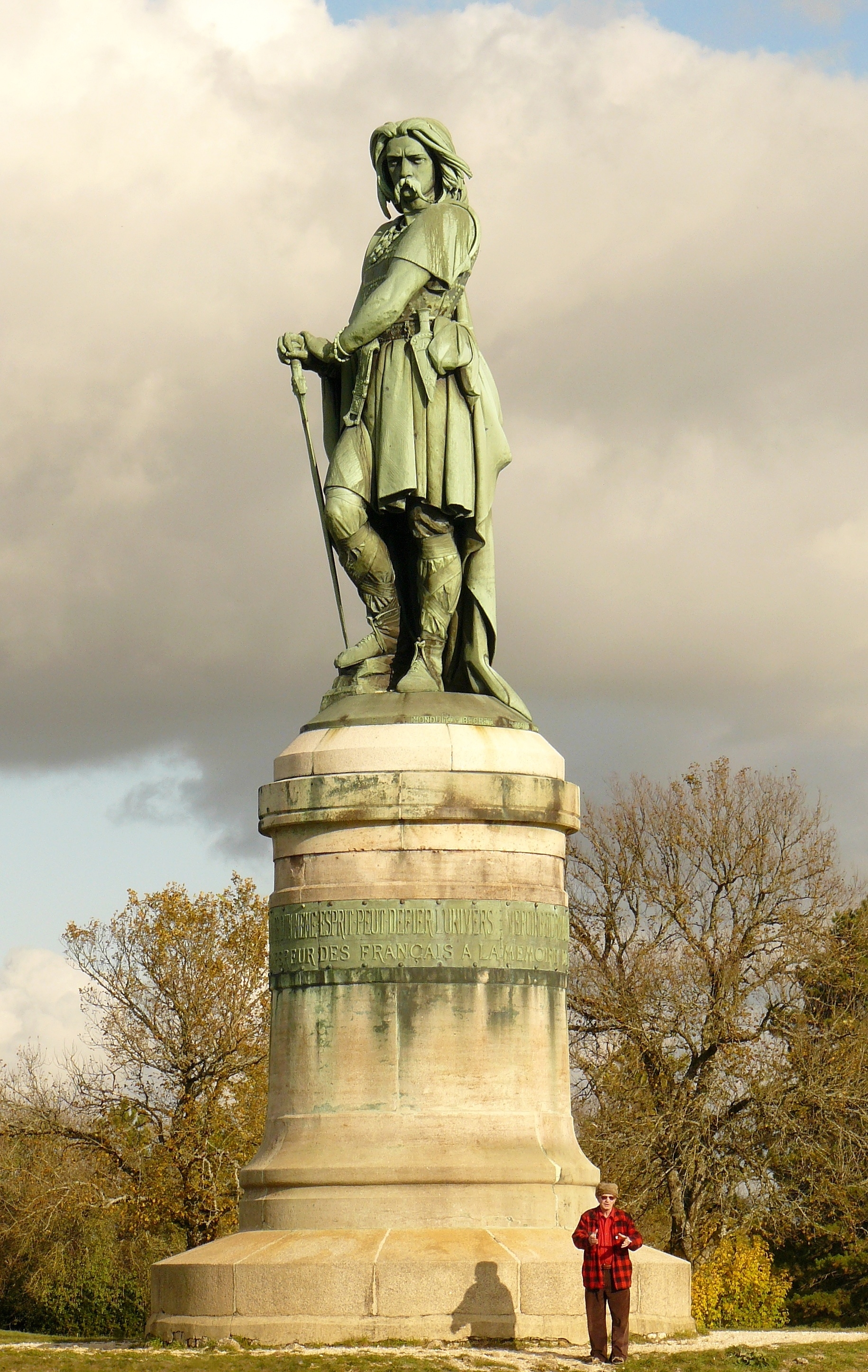When I was a kid, taken to Catholic services, I always – probably like any other kid – experienced a vivid distaste for this representation. I guess I could buy into the notion of self-sacrifice, the cruelty of the fate imposed to a good man, and even, admittedly in my wildest imagination, the ancient Near Eastern cosmic mythology of the dying and rising god, but it was never evident to me (though it is now) why this lifeless figure impaled on a cross needed to be paraded eternally before my nose.
Certain theological acrobatics endeavor to portray this scene as a moment of victory. Indeed, the success of this exegesis invited its later, equally successful emulation by Napoleon III, in search of a secular messiah in the person of the defeated and ultimately executed Gaulish chieftain Vercingetorix, who conveniently (but, it later transpired, inaccurately) declared, according to the account in Caesar’s Gallic Wars, that “La Gaule unie, formant une seule nation, animée d’un même esprit, peut défier l’Univers.”

Whilst Vercingetorix at least, in Viollet-Le-Duc’s representation, appears proud and almost as a victor, Jesus, on the other hand, appears broken and lifeless, anything but an inspirational figure. This aspect of its postulated deity has presumably been a major weakness in uniting Christendom against the much better organized Muslim conquerors, and indeed one wonders whether Caesar would have triumphed over Vercingetorix if he had been laden down with such a handicap.
The emphasis on suffering and redemption so characteristic of Christianity both historically and culturally appears as surprisingly singular, though Shiism seems to have preserved some similar ideas from its related Zoroastrian substrate, and Judaism has applied the notion to the people in both the Deuteronomic and Zionist traditions, but not to its deity.
That suffering has a redemptive character appears almost axiomatic to many Westerners, even those who would portray themselves as emancipated from the intellectual heritage of Christianity. But we worship our suffering because we have been taught, by the most unnatural of ruses, to do so. To bear suffering without protest, convinced one is thereby serving some higher goal, is, obviously, a desirable attribute, but from one standpoint only: that of those who benefit from our quiescence.
That there is plenty of suffering in the world I do not doubt, but many cultures endure it without losing, and certainly not forever, an underlying gaiety and celebration of life. Christianity is presented to us as a solution to the problem of the existence of suffering (and even more metaphysically of evil) in the world. Yet this “problem” is entirely of its own making. That suffering is a fact does not make it a problem – unless you have devised an abstraction of God as both creator and redeemer in the first place. Our natural instinct is to flee suffering where possible and to heal it through mourning and empathy where not. To dwell on it deliberately, to find it where it does not exist, to elevate it to ubiquitous supremacy, seems a biological aberration.
And yet it is to this counterintuitive quest that the calvaires incite us: to be in the midst of the vibrant, teeming beauty of life and yet not only to find unsuspected morosity in its midst, but to prefer this morosity to celebration. Even the best in Catholic spirituality is rarely more than a lyrical accommodation to this underlying tragic conception of the world. Never does it burst free.
During all of human history and most of its present extent, the natural rhythm of life has been and is satisfactorily mirrored in rituals and cultures which have not needed any such artifice. To crown innocent hilltops with such disfigurations is, I would argue, not to honor any spirit of sacrifice: it is to stand in Pilate’s shoes, not those of his victim, institutionalizing and thereby perpetuating the cycle of persecution.